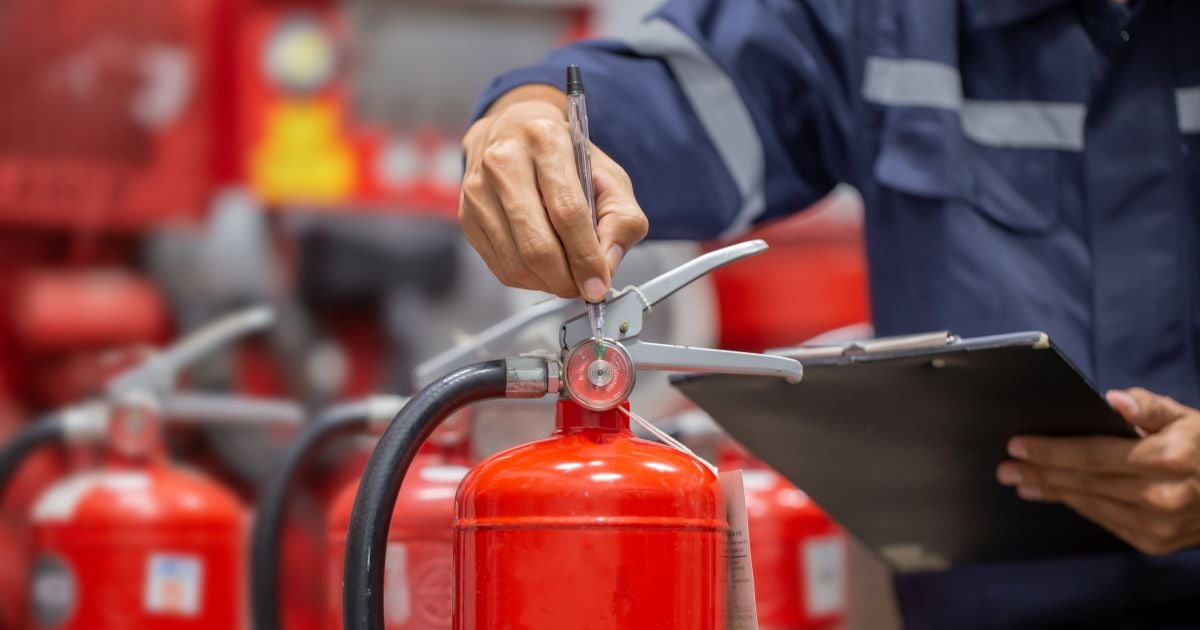Sydney companies must ensure that they are protected from fires. This is not just to follow the law, but also for their clients, employees, and their property. Fires can result in devastating losses in minutes, but the risk can be minimized or avoided with the proper precautions in place. Regular fire inspections, periodic testing and the tagging of electrical systems and complying with CFSP regulations all contribute to create a safer environment and ensure that businesses are in compliance with the local government as well as Building Code of Australia (BCA) standards.
Why fire inspections are vital to safety
The first line of defense is fire inspections. These inspections verify that every component of a building’s fire protection system is in place and up to date. In Sydney all businesses are required to conduct an inspection every six or 12 months, depending on structure’s type and the regulations of the council. The inspections usually cover everything from fire alarm panels and sprinkler systems to smoke alarms, fire hydrants, extinguishers, as well as emergency lighting.

The ability to spot hidden issues and fix the problem before they pose a risk is what makes inspections important. It may not seem important however a minor issue with a fire hydrant, or an alarm for smoke that’s blocked can result in death in the event of an emergency. When they conduct regular fire inspections, business owners are not only meeting compliance obligations but actively taking steps to guard their business from unforeseen tragedies.
Testing and Tagging: Addressing Hidden Electrical Safety
Electrical systems are among the main causes of workplace fires this is the reason why testing and tagging is a must be included in a fire safety strategy. The process involves examining the electrical equipment to make sure it is safe, functional, and compliant, and then attaching a visible tag that indicates the item has passed an inspection. This is a condition that’s often not a simple one. For many companies this is a measure to guard against the possibility of a risk.
If they are not checked regularly, old wiring, defective appliances, or worn-out cables can become fire hazards. Businesses can reduce the risk of fires by regularly testing and marking electrical equipment. This also creates confidence and trust among employees by reassuring them that their work environment is secure. When combined with fire inspections, testing and tagging is a comprehensive safety program that reduces risks on several fronts.
The role of CFSP for compliance and Certification
Only a Competent Fire Safety Professional (CFSP), who is based in New South Wales, can attest and sign vital documents pertaining to fire safety such as Annual Fire Safety Statements. Introduction of CFSP certification has improved the standards for fire safety by ensuring that only certified professionals are able to assess and verify security. Working with a CFSP guarantees that reports and inspections are not just paper work, but are backed by reliable assessments from experts.
The role of a CFSP extends far beyond ticking boxes. These practitioners assess the condition and effectiveness of fire protection systems. They also provide thorough reports, and verify that they are in compliance with the regulations. Without CFSP certification, companies risk fines, legal issues or even shut downs if security measures for fire are judged to be inadequate. Utilizing experts who are certified will ensure that the fire safety system is being maintained in a proper manner, and all compliance requirements are met.
The Fire Safety Act: A Lifelong Commitment
The issue of fire safety is not something that is only an ongoing responsibility for every business owner. The process of ensuring safety will never end with regular checks, testing electrical systems on a regular basis, and certifying under CFSP supervision. This method is not just legally enforceable, but it encourages safety at work. Employees are able to feel secure knowing that evacuation plans have been formulated Smoke detectors are operational, emergency lighting has been verified, and the fire protection system is in place to use.
By treating fire safety as an ongoing procedure and not merely a checklist to be checked every year companies can lower risks while also enhancing their reputation. If safety is considered a top priority customers and clients feel more secure. In the long run, investing in proactive fire protection will save costs by avoiding costly damages, fines, or legal battles, while also protecting the lives of every person who walks into the building.
Conclusion
Sydney fire safety requires a multilayered approach, which includes fire inspections, testing and tagging, as well as certification by an CFSP. Each component is vital to making sure that businesses adhere to the regulations and, more importantly, ensuring that people and properties are protected. If safety is made a constant part of operations rather than as a secondary consideration, businesses will do not just meet their legal obligations but also ensure a safer and secure environment for the coming years.